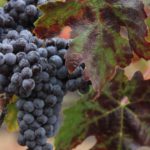Decoding a Wine Label
In our last news message, we began to explore the mystery, history, and mystique that surrounds a wine label. As we continue, I will try to help our readers better understand what some of the words, phrases, symbols and notations stand for on a wine bottles official document.
If you think the information given to you on a wine bottle is confusing, think of how they had to deal with this situation long before labels were available. The reason wine bottles have their many unique shapes was not without reason. The shape of a bottle often told you exactly what style of wine was actually inside. A tall, straight, high shoulder vessel usually indicated that a Bordeaux Claret wine was inside. One with a broader base with sloping shoulders meant a Burgundy was within. The hock style vessel, tall and tapered with no shoulder was meant for German style wines. Thus, the shape of the bottle was often the indicator for what style of wine you were being served.
With the introduction of paper labels being affixed to wine bottles, no exact standards were ever put in place as to what information was required to be printed on them. Typically, the producers name, the village where the grapes were grown, and vintage date were about the only information ever needed. Over time, mandatory regulations dictated that certain data be required on each and every wine label. Bottle size, alcohol content, importer and country of origin are but a few that were added. Today, either by law or by the disgression of the winery, more and more information seems to be spread across the front of each and every wine bottle. You’d swear a billboard sized signage, a magnifying glass and a Lone Ranger Ovaltene decoder ring were necessary equipment to display and decipher the volumes printed on these labels today.
With wines being imported from an ever growing number of countries throughout the world, most Old World estates have very standardized labeling regulations. Others, mostly New World wines from the United States, Australia and South America, are a bit more lax as to what must be defined for the consumer. Yet, much of the information presented are one in the same, just in a different language. Let us look and compare some of the descriptive we find on various bottles in our cellars and on store shelves.
The terms tinto, rotwein, rosso and rouge all mean red wine. Blanco, bianco, and blanc are terms that stand for white wine. Dry, as in a style of wine, may be indicated by the terms sec, seco, secco, trocken, brut, or szaraz. Or course, we should all know that vin, vino, vinho and wein all stand for our favorite beverage, wine.
Old World wines, mostly from European nations, seem to pose the most problem for consumers in terms of understanding what exactly the information on a label is trying to convey. Classifications as to the quality level of a producer are quite clear. Knowing the descriptive is the key. Here is what you may see on a label, depending on the country of origin, which will describe wines of good to great quality.
In France, indicators such as Cru Classe, Grand Cru Classe, Premier Cru, AO, VDQS, Vin de Pays, Vin de Table represent their different levels of quality.
In Italy, their tiers are based on the terms DOC, DOCG, Riserva, Riserva Speciale and Stravecchio.
QmP on a German wine label represents their highest quality.
As for a quality barometer on New World wines, the AVA district, vineyard designation, or producer may be your only indicator as to their guarantee of quality. Though terms such as Reserve, Grand Reserve, Special Reserve and Vintners Reserve may hold some truth to their validity for many honest producers, these words may reflect nothing more than an advertised falsehood by other Prince’s of Plonk. Since there is no governing license control as to how these items may be used on a bottle, always remember, buyer beware.
Another significant notation on a bottle as to its quality can be the fact that it was Estate Bottled or Estate Grown. This means that all facets of the wine making process have been performed under one umbrella, under one roof, where no outside tasks had taken place in the production of a bottled wine. A winemaker who undertakes total responsibility and control in all facets of production usually result in wines crafted of higher quality. Estate bottlings listed on a label will be represented by the words Aus Eigenem Lesegut or Gutsabfullung for German wines, Denominazione d’ Origin in Italy, Embotellado en Propriedad in Spain and Mis en Bouteille au Domaine or au Chateau in France.
When buying a bottle of Champagne, (remember that only wines grown and bottled in this region of France can legally be described as true Champagne) there are a few terms that baffle even the most savvy of wine lovers. The term Method Chamenoise means that the wine was fermented in the bottle. NM descreetly found on a label means Negociant Manipulant, a person who has purchased grapes and blended them into his own style.
Most champagnes are made primarily from 3 grape varietals: chardonnay, pinot noir and pinot meunier. We all know that the juice inside every varietal of grape contains clear juice when pressed. The skin of a red grape, when in contact with this clear liquid, will ultimately lend to its actual color. Thus, the reference Blanc de Blanc means white wine from white grapes and Blanc de Noir indicates white wine from red grapes.
To refresh our readers, when it comes to the flavor desriptors for Champage, in terms of driest to sweetest, here is the learning curve table.
* Extra Brut – Bone Dry
* Brut – Dry
* Extra Dry – Medium Dry
* Sec – Touch Sweet
* Demi Sec – Sweet
* Doux – Very Sweet
In terms of German wines, these levels apply.
* Kabinett – Dry to touch Sweet
* Spatlese – Sweet
* Auslese – Very Sweet
A few final notes on various items that may be found on a label, the word Bin #, found predominately on Australian wines, describes a particular batch, a certain region, or a specific vineyard blend fielded by the winemaker.
A winery or producers name on a label can also be deceptive without trying to do so. With the globalization of wine, many producers now are in partnership or have purchased vinyards in other countries, far from their established home base. In the case of Mondavi and Greg Norman wines, each has bottlings on store shelves produced from grapes grown in other countries. Be aware that a Mondavi wine way in fact indicate Product of Chile instead of Napa or California. Also new to the market are wines labeled Product of California for Greg Norman wines, who is best known for his Australian bottlings. The information is there, if only we would take the time to look a little closer.
Now that we have touched on the many familiar or foreign aspects described and found on wine labels, (Lord knows there are many more that we haven’t the time or space to explore) we hope you have a better understanding of the many descriptors found on a wine label. The information provided may well aide you in a more educated purchase. If there is still a question you feel was left unanswered, please drop us an email. Its the better alternative rather than pointing you in the direction of the nearest animal, caricature, cartoon, painting or building on the nearest bottle. In any case, keep the corks a popping, the glasses clinking, and the wine continuously flowing.



